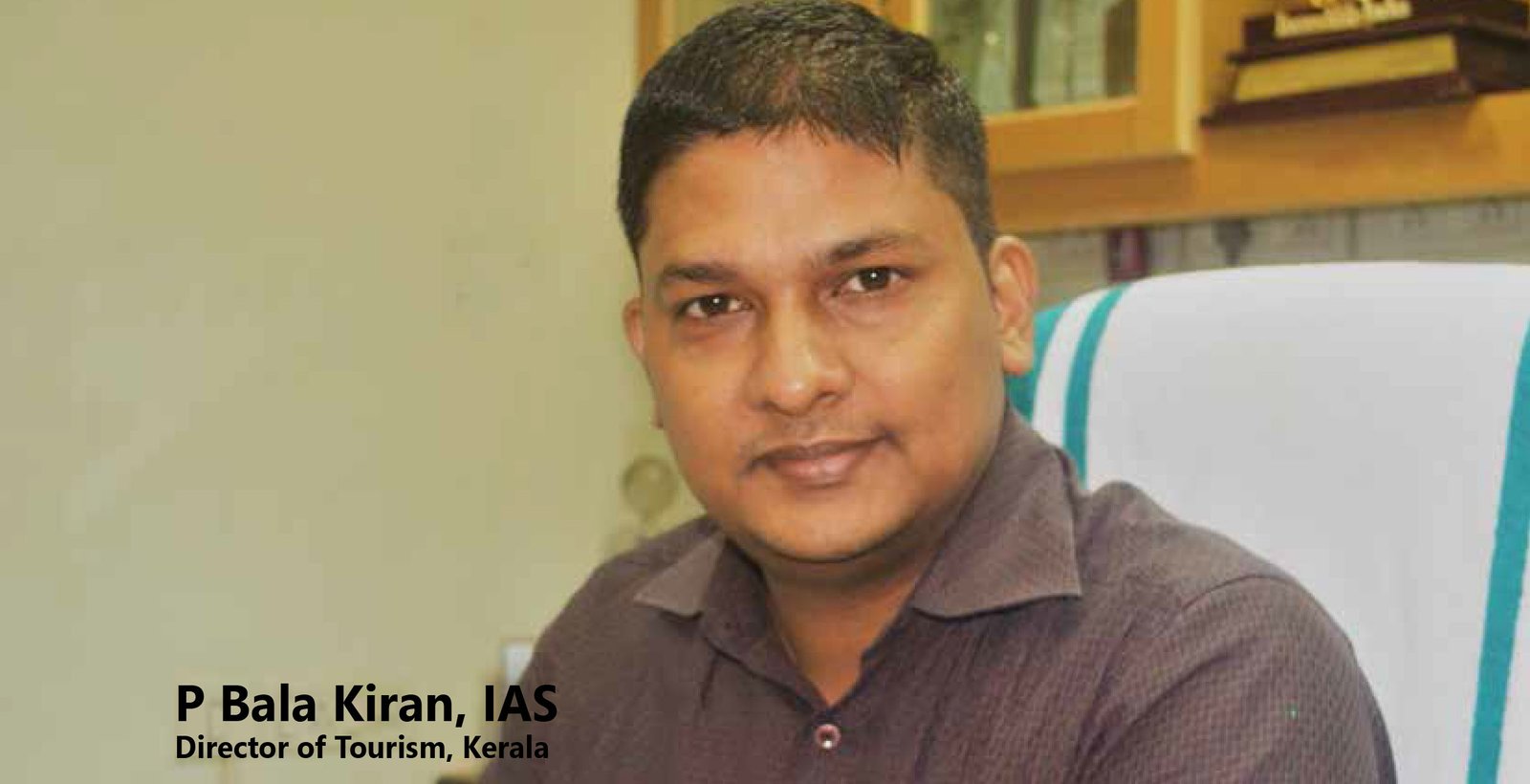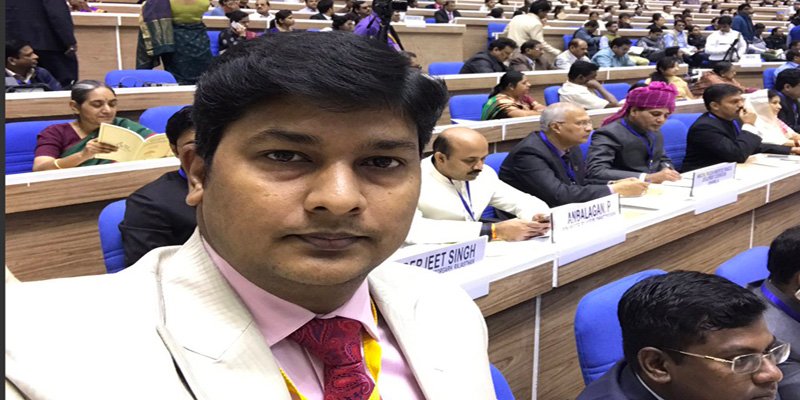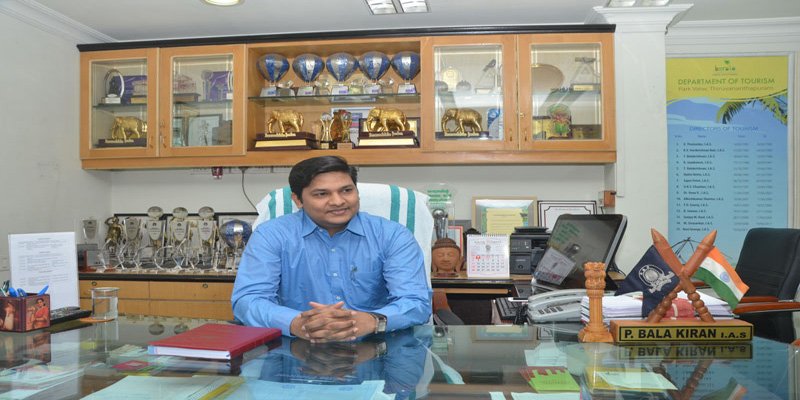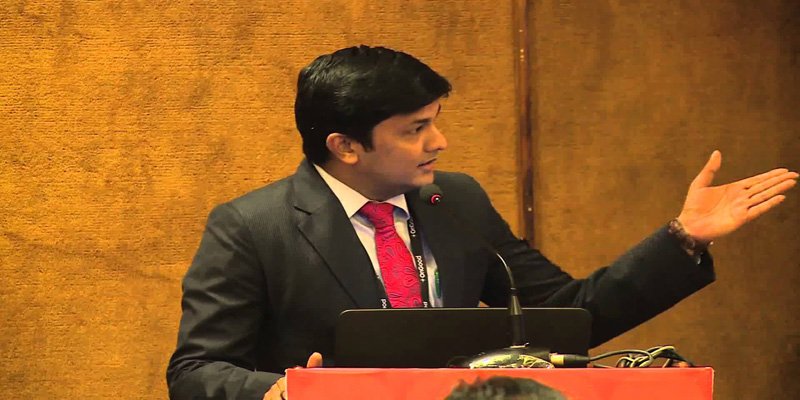Director of Tourism, Kerala
Text: Remitha John
“Come Out and Play is the new campaign by Kerala Tourism”
The most celebrated District Collector of Kannur is today basking in the charm of an illustrious profile. As the Director of Kerala Tourism, P Bala Kiran, IAS is today spearheading some major projects which are set to unveil the unexplored tourism potentials of the God’s Own Country. The young IAS officer has already carved a niche for himself in the minds of Keralites by winning two national awards from the President of India for the ‘Innovative measures’ implemented in Kannur during the Assembly Elections of 2016 and for the ‘Barrier-free Kannur’ project by making the district more accessible for the differently-abled section. With such a brilliant track record, he proved to be a truly deserving recipient for the ‘Best Collector of Kerala’ in 2016 for his outstanding work in Kannur.
Bala Kiran has been in Kerala for almost 10 years now. It is evident with the appreciation received from the state and the country; he naturally leaves a mark where ever he works; puts every effort to discover new scopes for growth and at the same time, does not bear a twofold regret for being away from his hometown, Hyderabad. With this winning spirit and a delightful demeanor, Bala Kiran lead the Department of Kerala Tourism by attentively observing and consciously conquering the pulse of the tourism sector in Kerala.
In fact, it shouldn’t come as a surprise, especially with the skill sets he has attained from the B.Tech and M.Tech degress in Computer Science and Engineering from IIT Madras and the experience as a Missile Scientist from DRDO; these are hard to beat.
Nevertheless, Bala Kiran truly rejoices his stint in Kerala because he has a transfixed symphony with the beaches here, the Kerala sadya, karimeen polichathu and thalaserry biriyani. In an interview with Kerala Travel Explorer, P Bala Kiran discussed the compelling trajectory for the tourism sector in Kerala.
Can you throw light on the new initiatives of the Department of Tourism under the ambit of ‘Responsible Tourism’?
The Kerala tourism policy 2017 launched in November gives great importance to ‘Responsible Tourism.’ We intend to create state-of-the-art facilities without compromising on the principles of ‘Responsible Tourism’ and ‘Accessible Tourism.’ Responsible Tourism (RT), means the benefits of tourism would reach the local community without hampering the environment. In this context, almost 10 years back, Kerala Tourism had initiated the plan in seven destinations including Kumarakom and Munnar. But now, we will be expanding across the state. A ‘Responsible Tourism Mission’ has also been initiated which comprises of a special office within Kerala Tourism. All the 14 districts will encamp RT Mission offices. The role of these offices is to incorporate RT in all its tourism activities. So far, we have 118 RT units while the goal is to reach a 1000 units by the end of this year.
“Responsible Tourism means the benefits of tourism should reach the local community and it should not hamper the environment.”
What is ‘Jalayanam?’ and how did it come into being?
We have not used the concept ‘Jalayanam’ yet, but have started with a plan called ‘River Cruise Tourism.’ In Malabar, we conceived this project for Rs 325 crores which combine eight rivers through Kasargode, Kannur, Mahe, and Calicut. We have formulated several cruises namely ‘Theyyam Cruise,’ ‘Muthappan Cruise,’ ‘Mangrove Cruise,’ and the like which will bypass the local areas of the Malabar region. This project is going to be marketed as the next big project for Kerala Tourism. The government of Kerala has sanctioned about Rs 50-60 crores for this infrastructure. We have also taken it to the Central Government and is hoping to receive a positive response.
PEPPER (People’s Participation for Planning and Empowerment through Responsible Tourism) aims at popularising unexplored destinations through sustainable practices. Which are some of the places covered under this scheme?
PEPPER is more than popularizing unexplored destinations. It is about projecting tourism sector as a unique body under the garb of peoples’ participation. For this, we are conducting various gram sabhas in the panchayat level, incorporating the entire panchayat for planning tourism in that specific area. We have initiated this project in Vaikom municipality and surrounding panchayats in Vaikom block. By this, Kerala Tourism will include peoples’ participation right from the planning stage of creating a tourism destination. So far, we received tremendous traction for the same. This will help us in creating new plans and programmes under the ambit of RT which will promote a fine ground for homestays as well.
In your opinion, what more needs to be done to promote tourism in Kerala?
Though Kerala has been a tourism destination for almost 20 years in India, there are only a few known places namely Athirapilly, Fort Kochi, Munnar, Thekkady, Alleppy, Kumarakom, Varkala, and Kovalam. However, there are umpteen more places that have the potential but has not been tapped, especially Northern Kerala as per records not more than eight percent of people visit. Even places like Ashtamudi and Pathanamthitta have not been explored to a fine extent. Firstly, we are planning to expand the tourism paraphernalia to the entire state. Secondly, tourism in Kerala spikes for merely five months. We are, thus, planning to glamorize monsoon tourism mainly because we have rain for about four to five months and we hope to brand it as one of the main products. Thirdly, tourism in Kerala has been heavily focused as a honeymoon, family or a leisure destination. Kerala Tourism wants to change that idea by attracting the younger crowd who would not prefer to sit inside a houseboat but explore the excitement. Thus, we have asked each district to come up with core ideas to promote adventure tourism.
Which are the destinations that are currently under development?
In Kollam, we are coming up with the ‘Jetayu Earth’s Centre’ which will house the world’s largest bird sculpture, a 100-crore project. This will bring many to Kollam district. In North, we have the ‘River Cruise’ project. Also, we are now making detailed plans on developing Muziris Heritage Project,’ ‘Thalassery Heritage Project,’ and ‘Alappuzha Heritage Project;’ these three will form the core projects for Central, North and South Kerala.
“Tourism sector is the only sector that can produce mass employment in a major scale.
“We have asked each district to come up with core ideas to promote adventure tourism.”
Kerala is presently known as the ‘land of adventure.’ How did this come about on the map?
We have been focusing on adventure projects and had been focusing on the same. We have been promoting Kerala on the campaign ‘Come Out and Play’ through all media.
MICE (Meetings, Incentives, Conferences and Exhibitions) tourism seems to be an area of focus now in the travel sector. What are your thoughts on this?
Will the state benefit from this segment? We have been trying to increase our numbers during our off-season and also to save the industry during minor hiccups. We have also found that there are frequent tourists who travel to Kerala and stay here mostly during the off-season. MICE tourism has been given due importance we have been encouraging MICE properties in Kerala.
Tourism has been avoided from hartals. Has this become a mandatory rule to be followed or is it still a far-fetched dream?
Tourism being avoided from hartals has been vehemently demanded by the tourism industry and the Department. But mostly, the people of the state and tourists have been asking for the same. It is only obvious for the guests who visit Kerala finding it difficult when we impose our internal problems on them. As we have exempted the IT sector from hartal, we decided the same for tourism as well. Given the context in mind, the Chief Minister of Kerala called an all-party meeting to bring a consensus between all the parties to avoid tourism from the hartals. This decision will also help the tourism department to work properly and also allow the tourists to move freely across the state. This has been unanimously supported by all the political parties. However, this is a covenant, and not a law but has been accepted with an understanding by all, for the goodwill of tourism sector of Kerala.
Job opportunities are plenty in tourism sector and the Department of Tourism has also been organising career guidance programmes on a large scale. How is the response from the youth of the state?
The tourism sector is the only sector that can produce mass employment in a major scale simply because tourism or hospitality cannot be replaced by machines. People prefer to get pampered by a person, not a machine which is the reason as to why hospitality sector needs more manpower. By 2020-2021, we are going to build 4.5 lakh job offers in this sector.
How has Department of Tourism become a part of pilgrimages?
Pilgrim tourism doesn’t come under Department of Tourism but we have owned it up because people who come for pilgrimage, say to Sabarimala or Guruvayoor, do not only visit the shrine, but also find time to check out the neighboring districts. Keeping this in mind we have put in Rs 100 crore for the betterment of Sabarimala. The Devaswom board has also put in Rs 100 to Rs 200 crore for pilgrim amenities.
Any mile stones that you wish to make in this department?
I do hope to make the state disabled friendly and provide a barrier-free environment for the differently abled tourists. Our main focus, however, will increase the number of tourists to this state. To enable this we are building upon the learnings from the recent events in the tourism sector. The sector will be immediately ramped up with more CCTVs, basic toilet facilities, and lighting up all the places. We are also bringing in more tourism police which will include special police personnel for tourism department alone. We are also going to hike the number of women tourism police and give them special uniform to distinguish them from others. Tourism police will also be given special training including learning multiple languages.special training including learning multiple languages.






